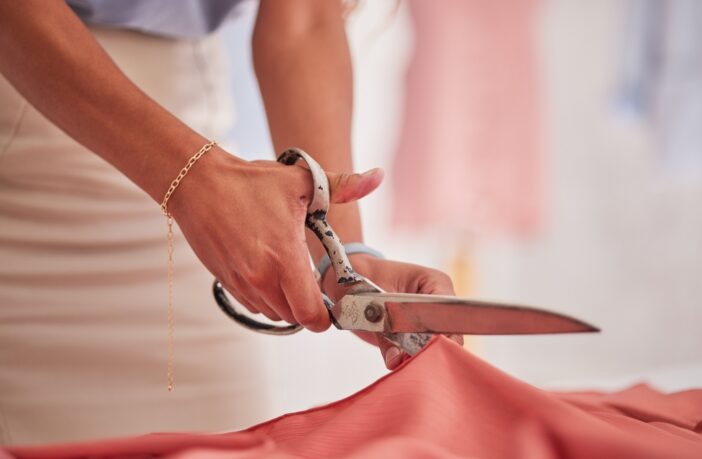Cost savings
One of the most obvious advantages of learning how to mend your own clothes is the potential for substantial cost savings. Clothing expenses can add up quickly, especially when you frequently need to replace items due to minor damages. By acquiring basic sewing skills, you can extend the life of your wardrobe significantly.
Reducing clothing costs
Repairing a small tear or reattaching a button is far cheaper than buying a new piece of clothing. Even professional alterations and repairs can be costly, but doing it yourself eliminates these expenses entirely. This practice can lead to significant savings over time, allowing you to allocate your budget to other important areas.
Investing in quality pieces
Knowing you can repair your clothes might make you more inclined to invest in higher-quality pieces. Although initially more expensive, these garments are often made to last longer and withstand more wear and tear. With the ability to mend them, you ensure that these investments continue to serve you well for years to come.
Environmental impact
The fashion industry is one of the largest polluters in the world. By learning to mend your clothes, you reduce waste and minimize your environmental footprint. This practice aligns with the principles of sustainable living and can profoundly impact our planet.
Reducing waste
Throwing away clothes due to minor damages contributes to the growing problem of textile waste. Landfills overflow with discarded garments that could have easily been repaired and reused. By mending your clothes, you help reduce the amount of waste generated, promoting a more sustainable lifestyle.
Supporting sustainable fashion
Mending your clothes also supports the broader movement towards sustainable fashion. It encourages a culture of repair and reuse, rather than the prevalent trend of fast fashion and disposable clothing. This shift in mindset is crucial for the future of our planet and the fashion industry.
Personal satisfaction and skill development
Mending your own clothes can be incredibly satisfying. The sense of accomplishment that comes with fixing something with your own hands is unparalleled. Additionally, it’s a valuable skill that can lead to other creative and practical pursuits.
Boosting confidence
Successfully repairing a piece of clothing boosts your confidence and self-reliance. Knowing that you can handle minor issues without seeking outside help is empowering. This confidence can extend to other areas of your life, encouraging you to tackle new challenges and learn new skills.
Developing creativity
Sewing and mending require creativity and problem-solving. As you become more adept, you might find yourself exploring more complex projects, such as altering the fit of a garment or adding decorative elements. These creative endeavors can be highly rewarding and provide a productive outlet for artistic expression.
Preserving sentimental items
Many of us have clothes that hold sentimental value. Whether a sweater knitted by a loved one or a dress worn on a special occasion, these items are often irreplaceable. Learning how to mend your clothes allows you to preserve these cherished pieces and keep the memories associated with them alive.
Maintaining connections
By repairing sentimental items, you maintain a tangible connection to the people and events they represent. This practice can be particularly meaningful for those who value family heirlooms and traditions. It’s a way of honoring the past while ensuring future generations can enjoy these items.
Creating new memories
Mending and wearing sentimental clothes also allows you to create new memories while keeping the old ones close. Every time you wear the repaired item, you’re reminded of its history and significance, adding another layer of meaning to your wardrobe.
Promoting mindfulness and patience
In our fast-paced society, taking the time to mend your clothes promotes mindfulness and patience. The process requires focus and attention to detail, providing a welcome break from the constant rush of daily life.
Enhancing focus
Sewing and mending are activities that demand concentration and precision. This focus can be meditative, helping to clear your mind and reduce stress. It’s an opportunity to slow down and engage in a task that is both productive and calming.
Cultivating patience
Learning to mend clothes teaches patience and perseverance. It’s a skill that improves with practice, and each project presents a unique set of challenges. Embracing this process cultivates a patient mindset, which can be beneficial in many aspects of life.
Conclusion: Mending your own clothes
Learning how to mend your own clothes is a valuable skill with far-reaching benefits. From saving money and reducing your environmental impact to boosting your confidence and preserving sentimental items, the advantages are numerous. Additionally, the practice promotes mindfulness and creativity, offering a rewarding and enriching experience. By taking the time to learn and apply this skill, you not only enhance your wardrobe but also contribute to a more sustainable and fulfilling lifestyle. So, pick up a needle and thread, and start reaping the benefits of mending your own clothes today.



